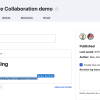Search Results
Collection
Governance
Blog Post
From Finance to Palantir
“
Palantir truly leaned into our organization from a strategic perspective and the needs of our community. They became a vital part of our team in helping bring this project to fruition.
Diane Ludwig, Vice President of Communications, Marketing, and Public Relations at Centra Health

Case Study
Main Line Health
“
Palantir came in as the subject matter experts on the re-design of our multi-million dollar e-commerce web site. They exceeded expectations on every measure. We then re-hired them for a subsequent project. We recommend Palantir highly.
Jim Kaczkowski, Marketing Manager at the University of California Berkeley Extension






